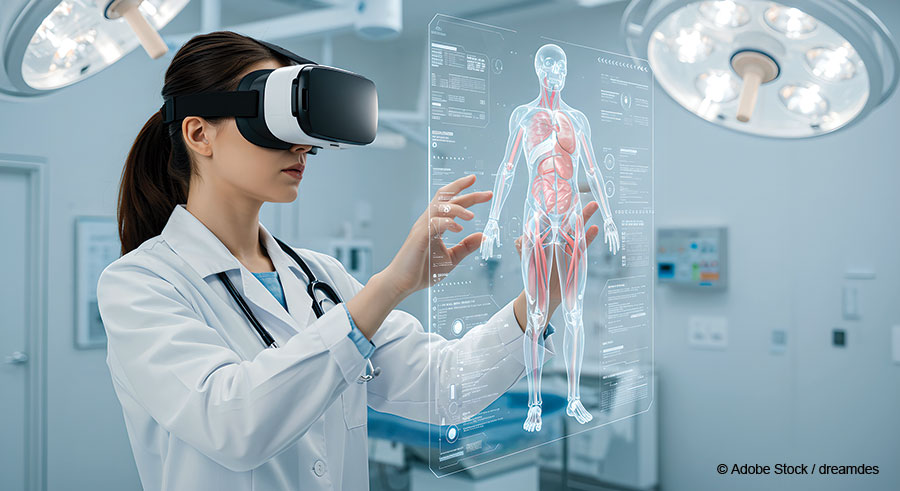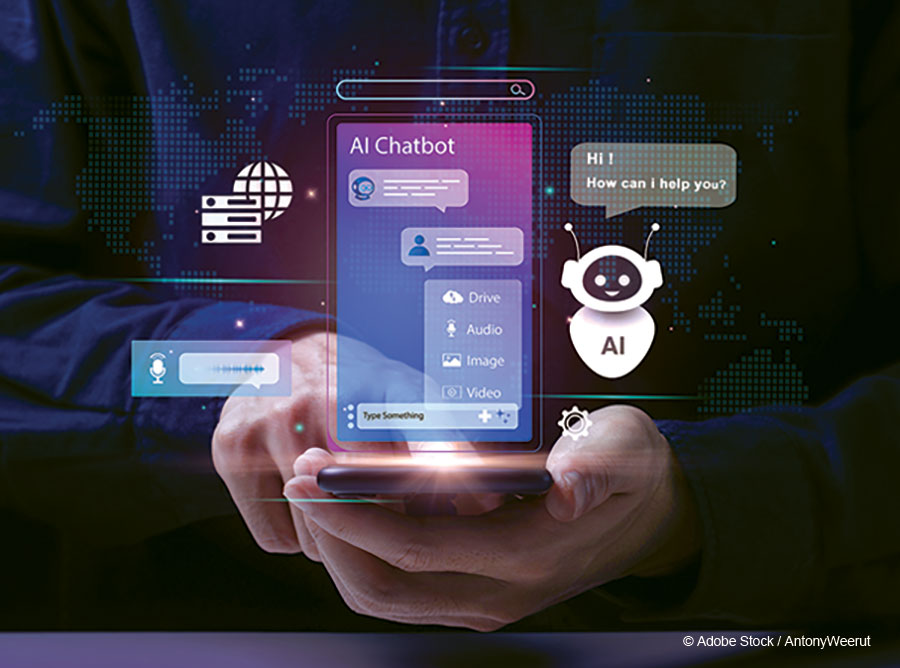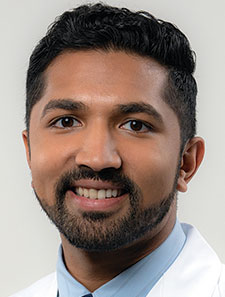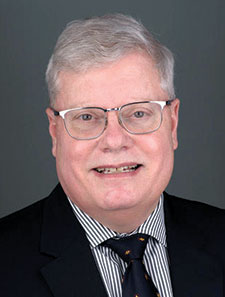 Medical students and residents are embracing new technologies to help them study. This shift is driven by advances in artificial intelligence (AI), educational platforms, and other digital tools, along with demands for more flexible and personalized learning. Here, we discuss the pros and cons of using these new technologies and how program directors and medical schools are adapting to this type of learner.
Medical students and residents are embracing new technologies to help them study. This shift is driven by advances in artificial intelligence (AI), educational platforms, and other digital tools, along with demands for more flexible and personalized learning. Here, we discuss the pros and cons of using these new technologies and how program directors and medical schools are adapting to this type of learner.
Explore This Issue
April 2025“The adoption of new technologies such as ChatGPT, YouTube, and various educational platforms is becoming increasingly common among students across disciplines, including in medical education,” explained Andrés M. Bur, MD, vice chair of technology and innovation, co-director of the head and neck oncology fellowship, and associate professor of the department of otolaryngology–head and neck surgery at the University of Kansas School of Medicine in Kansas City. “The pandemic accelerated the use of digital tools, making them integral to modern learning. Students are leveraging these technologies to supplement traditional educational methods, enabling greater flexibility and personalized learning. The use of these technologies is both frequent and increasing, driven by advances in AI, the accessibility of online content, and the demands for more flexible learning,” Dr. Bur said.
Types of Technology
In addition to ChatGPT and YouTube, Dr. Bur noted that students are using learning management systems, which include platforms like Canvas, Blackboard, and Moodle for course materials, quizzes, and discussions; collaborative tools, such as Google Workspace, Microsoft Teams, and Slack for group projects and communication; flashcard apps like Anki and Quizlet for active recall and spaced repetition; simulations and virtual reality (VR), including tools like Body Interact or VR anatomy labs to practice clinical scenarios in a safe, controlled environment; podcasts and audiobooks for multitasking during commutes or exercise; and AI-powered study assistants, such as Gram-marly, Notion AI, and Wolfram Alpha to enhance writing and analytical skills.
We need evidence-based education; traditional methods are not adapted to our current learners. Comparing outcomes of different teaching strategies is required to see which ones work best, and we should adapt teaching strategies accordingly. —Anaïs Rameau, MD, MPhil, MS
Anaïs Rameau, MD, MPhil, MS, an associate professor of otolaryngology at Weill Cornell Medical College in New York, said, “Many of our residents and medical students use large language models (LLMs) daily to summarize information, create quizzes from textbook contents, and even summarize patient data for tumor board presentations. Some entrepreneurial residents and medical students are creating apps and startups using these new tools.”
The use of LLMs is “increasing among our trainees. They have more mastery of these tools than their mentors, and this is creating a technology divide between trainees and teaching faculty. I am unaware of any effort to address this challenge in ENT training,” Dr. Rameau added.
 A constant search for technology tools exists at the medical school level, according to Eric Gantwerker, MD, a pediatric otolaryngologist at Cohen Children’s Medical Center at Northwell Health, and associate professor of otolaryngology at the Donald and Barbara Zucker School
A constant search for technology tools exists at the medical school level, according to Eric Gantwerker, MD, a pediatric otolaryngologist at Cohen Children’s Medical Center at Northwell Health, and associate professor of otolaryngology at the Donald and Barbara Zucker School
of Medicine, both in New York.
The old model of having students sit for hours on end while faculty talk at them is the most inefficient use of time and should no longer be the model in the current technologically rich world.—Eric Gantwerker, MD
Students are increasingly using AI/LLMs to research, to serve as intelligent tutors, to create problem-based learning cases, and to generate multiple choice questions, Dr. Gantwerker said.
“It has not been formally integrated in any way, but those early adopters are starting to take hold. Students are using third-party software as well to generate flashcards, get questions, etc. Anki and Osmosis are some of the software [types] that are very popular,” Dr. Gantwerker continued. At schools that record lectures and give access to these recordings, students rarely watch at the 1x speed unless the lecture is very dense. “These students have grown up in a multimedia world and can process multimedia data much faster, and often, if given the choice, they would skip class and watch after because of the return on investment on their time. Some are using note-taking AI technologies and study guide applications.”
Adapting to the Learner
The days of in-person classes for content delivery are “gone (or should be gone),” Dr. Gantwerker said. Content can be delivered more efficiently, and “in-class time should be reserved for clinical context and application of knowledge, clarification of complex topics, and opportunities for students to ask questions. The old model of having students sit for hours on end while faculty talk at them is the most inefficient use of time and should no longer be the model in the current technologically rich world.”
Dr. Gantwerker added that some medical schools are ignoring new technologies and allowing students to “figure out what tools to use and let them fend for themselves. Some schools are embracing it and facilitating the use of the technologies (creating university-based closed LLMs or purchasing software licenses).”
“Unfortunately, many schools are not prepared to even guide students, as many faculty are unaware or [are not] versed in these technologies. With AI and LLMs so rapidly advancing, there are only a handful of faculty equipped with any familiarity, let alone the capabilities to help students properly leverage these technologies,” Dr. Gantwerker added.
Dr. Rameau agreed that the days of all-day in-person classes are gone. “We need evidence-based education; traditional methods are not adapted to our current learners. Comparing outcomes of different teaching strategies is required to see which ones work best, and we should adapt teaching strategies accordingly,” Dr. Rameau said.
Medical schools and program directors are not adapting fast enough, said Dr. Rameau, adding that “many medical schools lack curricula in digital health, AI, and virtual reality.”
Dr. Bur noted that in-person classes are becoming less central in medical education. “Hybrid and fully online models are now widely accepted, especially in higher education. While some programs, like those requiring hands-on skills (e.g., clinical rotations in medical schools), still prioritize in-person engagement, many theoretical components have moved online,” Dr. Bur said. “This trend reflects a growing recognition of the value of asynchronous and self-paced learning, which aligns better with students’ schedules and learning preferences. The bottom line is that there are more efficient ways to learn new material than listening to lectures.”
“Medical schools and program directors are increasingly embracing technologies to support modern learners,” Dr. Bur said. Along with offering hybrid curricula, examples include flipped classrooms, which encourage students to review materials before class, leaving in-person sessions for discussions or hands-on activities; virtual simulations via VR or augmented reality environments for skills training and clinical scenarios; and incorporating “digital literacy as part of medical education to ensure students can use tools effectively in practice.”
Other examples include “shifting from traditional exams to assessing practical skills and the application of knowledge” via competency-based assessments and providing wellness resources to “address challenges like screen fatigue by integrating wellness modules and promoting time management strategies,” Dr. Bur said.
Pros and Cons
Dr. Bur suggested that the positives of students using new technologies include “flexibility—students can learn at their own pace and revisit challenging concepts; accessibility—content is available anytime and often free or low-cost; personalization—adaptive technologies tailor learning paths to individual needs; engagement—interactive tools and multimedia make learning more engaging; and efficiency—technologies like watching lectures at two times the speed save time.”
Negatives to using new technology include “reduced social interaction—online learning can isolate students from peers and instructors; distraction risks—the abundance of online resources can lead to information overload or distraction; inconsistent quality—not all online materials are accurate or reliable; equity issues—not all students have equal access to high-speed internet or devices; and dependence on technology—overreliance can impair critical thinking and problem-solving skills,” Dr. Bur explained.
For Dr. Rameau, the positives of students using new technologies are that trainees can now take a “proactive approach to creating learning methods that work for them with very little effort and that there are many sources and formats for learning available. The negatives are that writing skills are declining fast, and students are becoming more and more dependent on technology as learners.”
According to Dr. Gantwerker, “The positives are that students can be more efficient and often more efficacious in their studying and learning using technology. The negatives are [that] not all students are able to use or afford access (if costs are involved) to these tools. Faculty are often not familiar with and are unable to assist with or predict any issues with learning from these tools. Other drawbacks include [the fact] that the overreliance on technology may detract from some of the foundational and conceptual knowledge required.”
Final Thoughts
“My ask to faculty is to not stick your head in the sand or rest on your Luddite ways. Faculty should strive to learn more and find ways that these technologies can help them in their everyday clinical and teaching lives and try to be a facilitator of adoption. AI is here to stay,” Dr. Gantwerker concluded.
Dr. Bur suggested that the integration of technology in education “is not just a trend but a shift toward a more dynamic and student-centered approach. While these tools offer immense potential, we must strike a balance between leveraging technology and preserving the human elements of learning, such as mentorship, collaboration, and empathy, which are especially vital in medical education.”
Dr. Bur concluded that “future innovations, such as AI tutors, immersive VR experiences, and personalized learning algorithms, will likely continue to transform how students engage with education; however, institutions must remain vigilant about ensuring equity, fostering critical thinking, and preparing students for real-world challenge.
Katie Robinson is a freelance medical writer based in New York.
A Resident’s Perspective
“Convenience and efficiency are the biggest benefits of using technology as a resident,” according to Ajay Nathan, MD, a PGY2 otolaryngology resident at the University of Connecticut School of Medicine in Farmington. “In college, I spent a lot of time reading textbooks and taking notes. As a busy resident, this is not possible, and you must find ways to get learning in where you can because finding a dedicated time to study can be difficult. Often, non-clinical learning happens in short breaks between surgical cases or at the end of a long day.”
“One tool that I use is Google’s NotebookLM, which is an AI tool that generates summaries and answers based on materials that I upload. I put in digital versions of ENT textbooks as the source material, and I’m able to quickly review information based on questions I ask the tool. This makes studying really easy. For example, I can ask, ‘What is the relevant surgical anatomy to know for my case tomorrow?’
“There are plenty of apps available as well, which can help serve as a quick reference guide. These can be great for studying in five- or ten-minute intervals while on the go. As a medical student, I would often watch lecture recordings at two times the speed after reviewing relevant materials beforehand. I found that this was the best way to absorb the material.
“My medical school has transitioned out of traditional lectures altogether and has moved toward flipped classrooms where you watch videos beforehand and then attend group discussion sessions. I think this learning style will quickly take over in all kinds of medical education. Studies are not only showing that this is a more effective form of pedagogy but that it also helps to better teach the social and communicative aspects of medicine that go beyond the textbook.
“Medical schools are definitely adapting to the use of new technologies. One way I see this moving forward is by increasing the use of simulation, which can be such a powerful tool to help bridge the clinical setting to the classroom and apply learning. Virtual reality, 3D printing for accurate surgical models, and AI-enhanced experiential learning models are all ways I expect to see this applied through simulation.”
Medical School Deans’ Perspectives
Jeffrey Bumpous, MD, is the executive vice president for health affairs and dean of the University of Louisville School of Medicine in Kentucky, where he also serves as a professor of otolaryngology–head and neck surgery.
“We have geared up our technology and support for students. Everyone has technology that they use in M1 through their last PGY of training. Libraries have fundamentally changed, and those physical facilities are enhanced study spaces, archives, and technical support centers for learning and research. Artificial intelligence (generative AI and other enhanced computing formats) is increasingly used in educational, research, and clinical situations.
“The space and the context of the academic medical center and medical school are changing, but in my opinion remain relevant. I do not think you can become a critically thinking and discerning physician in a fully online program at this point. I also think that we must not forget that human interaction is, in fact, therapeutic; so, the threat on the horizon in my mind for medicine is that if we become too remote, we may fail to be relevant.
“It is my sincere aspiration that we will continue to emphasize critical thinking skills, ethics, and professionalism and that we will not forget the important therapeutic effect of human relationships; they are not mutually exclusive.”
Carol R. Bradford, MD, MS, is the dean of the college of medicine and vice president for health sciences at the Wexner Medical Center, both at The Ohio State University in Columbus, where she also serves as a professor of otolaryngology–head and neck surgery.
“Our health professions students are typically early adopters of AI and software to supplement and facilitate their learning. The frequency is increasing among students, while faculty take more time to assess and embrace such technologies.
“The days of all-day in-person classes are gone; however, classroom work is not. Classrooms are now used to facilitate the application of knowledge to the clinical environment rather than the direct transfer of medical knowledge, which students gain more effectively through e-learning and videos.
“Medical schools and program directors are adapting to this type of learner through essential faculty development. Faculty and staff need to understand the available technologies and how to best guide students in their use. This proactive approach ensures that both students and educators can fully benefit from these advancements in technology.”
Joseph E. Kerschner, MD, is an emeritus dean of the school of medicine at the Medical College of Wisconsin, where he serves as a professor of otolaryngology and communication sciences, and microbiology and immunology.
“More and more medical schools are using small group teaching with case-based learning. So, students may be in person all day but not in large lecture halls. Earlier clinical training is also employed at almost all medical schools. For those sections of the curricula that do have lectures, especially since the pandemic, virtually all schools provide recorded or digital options for students. Most students are familiar with and use AI and LLMs. Most medical schools are encouraging students to understand these tools and incorporate them as part of their learning and education.
“Program directors, I believe, would say that the medical students that match today are, in many ways, better prepared for medicine that has a knowledge that doubles about every 20-30 days compared to about every five years 40 years ago.
“A difficulty is that it is certainly more expensive to provide medical education that is more personalized and in smaller groups than with large lectures. So, the cost to the medical school to train a physician has increased; however, the pros include more efficient learning, better recall and impact in smaller groups, earlier clinical exposure (the reason most of us chose to be physicians), and the use of technology to enhance and improve education—something that has happened for centuries, and this is just the latest version.”


Leave a Reply